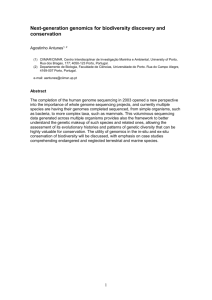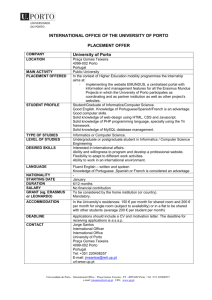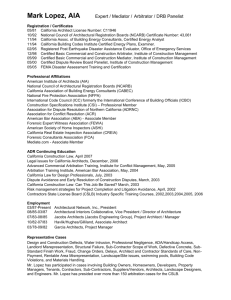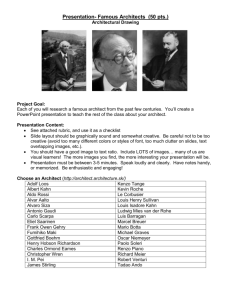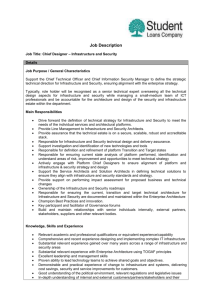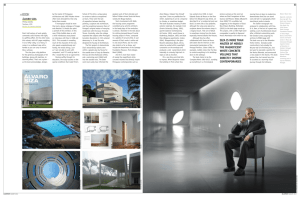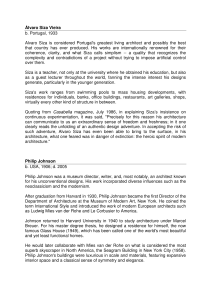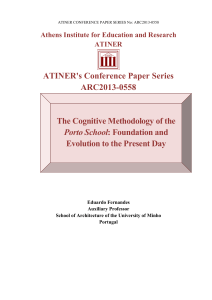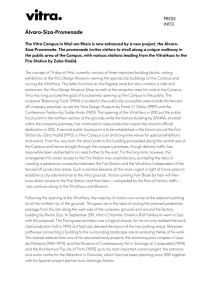Born from Sensibility
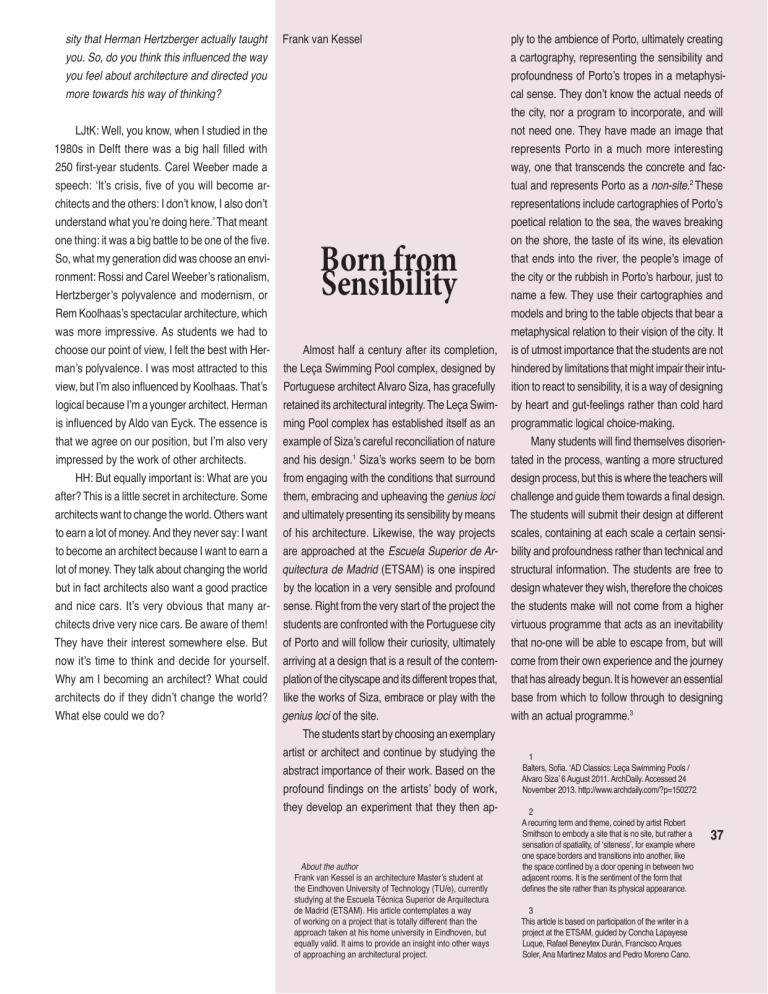
sity that Herman Hertzberger actually taught you. So, do you think this in fl uenced the way you feel about architecture and directed you more towards his way of thinking?
LJtK: Well, you know, when I studied in the
1980s in Delft there was a big hall fi lled with
250 fi rst-year students. Carel Weeber made a speech: ‘It’s crisis, fi ve of you will become architects and the others: I don’t know, I also don’t understand what you’re doing here.’ That meant one thing: it was a big battle to be one of the fi ve.
So, what my generation did was choose an environment: Rossi and Carel Weeber’s rationalism,
Hertzberger’s polyvalence and modernism, or
Rem Koolhaas’s spectacular architecture, which was more impressive. As students we had to choose our point of view, I felt the best with Herman’s polyvalence. I was most attracted to this view, but I’m also in fl uenced by Koolhaas. That’s logical because I’m a younger architect. Herman is in fl uenced by Aldo van Eyck. The essence is that we agree on our position, but I’m also very impressed by the work of other architects.
HH: But equally important is: What are you after? This is a little secret in architecture. Some architects want to change the world. Others want to earn a lot of money. And they never say: I want to become an architect because I want to earn a lot of money. They talk about changing the world but in fact architects also want a good practice and nice cars. It’s very obvious that many architects drive very nice cars. Be aware of them!
They have their interest somewhere else. But now it’s time to think and decide for yourself.
Why am I becoming an architect? What could architects do if they didn’t change the world?
What else could we do?
Frank van Kessel
Born from
Sensibility
Almost half a century after its completion, the Leça Swimming Pool complex, designed by
Portuguese architect Alvaro Siza, has gracefully retained its architectural integrity. The Leça Swimming Pool complex has established itself as an example of Siza’s careful reconciliation of nature and his design.
1 Siza’s works seem to be born from engaging with the conditions that surround them, embracing and upheaving the genius loci and ultimately presenting its sensibility by means of his architecture. Likewise, the way projects are approached at the Escuela Superior de Arquitectura de Madrid (ETSAM) is one inspired by the location in a very sensible and profound sense. Right from the very start of the project the students are confronted with the Portuguese city of Porto and will follow their curiosity, ultimately arriving at a design that is a result of the contemplation of the cityscape and its different tropes that, like the works of Siza, embrace or play with the genius loci of the site.
The students start by choosing an exemplary artist or architect and continue by studying the abstract importance of their work. Based on the profound fi ndings on the artists’ body of work, they develop an experiment that they then ap-
About the author
Frank van Kessel is an architecture Master’s student at the Eindhoven University of Technology (TU/e), currently studying at the Escuela Técnica Superior de Arquitectura de Madrid (ETSAM). His article contemplates a way of working on a project that is totally different than the approach taken at his home university in Eindhoven, but equally valid. It aims to provide an insight into other ways of approaching an architectural project.
ply to the ambience of Porto, ultimately creating a cartography, representing the sensibility and profoundness of Porto’s tropes in a metaphysical sense. They don’t know the actual needs of the city, nor a program to incorporate, and will not need one. They have made an image that represents Porto in a much more interesting way, one that transcends the concrete and factual and represents Porto as a non-site .
representations include cartographies of Porto’s poetical relation to the sea, the waves breaking on the shore, the taste of its wine, its elevation that ends into the river, the people’s image of the city or the rubbish in Porto’s harbour, just to name a few. They use their cartographies and models and bring to the table objects that bear a metaphysical relation to their vision of the city. It is of utmost importance that the students are not hindered by limitations that might impair their intuition to react to sensibility, it is a way of designing by heart and gut-feelings rather than cold hard programmatic logical choice-making. tated in the process, wanting a more structured design process, but this is where the teachers will challenge and guide them towards a fi nal design.
The students will submit their design at different scales, containing at each scale a certain sensibility and profoundness rather than technical and structural information. The students are free to design whatever they wish, therefore the choices the students make will not come from a higher virtuous programme that acts as an inevitability that no-one will be able to escape from, but will come from their own experience and the journey that has already begun.
It is however an essential base from which to follow through to designing with an actual programme.
3
1
Balters, So fi
Alvaro Siza’ 6 August 2011. ArchDaily. Accessed 24
November 2013. http://www.archdaily.com/?p=150272
2
A recurring term and theme, coined by artist Robert
Smithson to embody a site that is no site, but rather a sensation of spatiality, of ‘siteness’, for example where one space borders and transitions into another, like the space con fi adjacent rooms. It is the sentiment of the form that de fi
3
This article is based on participation of the writer in a project at the ETSAM, guided by Concha Lapayese
Luque, Rafael Beneytex Durán, Francisco Arques
Soler, Ana Martinez Matos and Pedro Moreno Cano.
2 These
37


